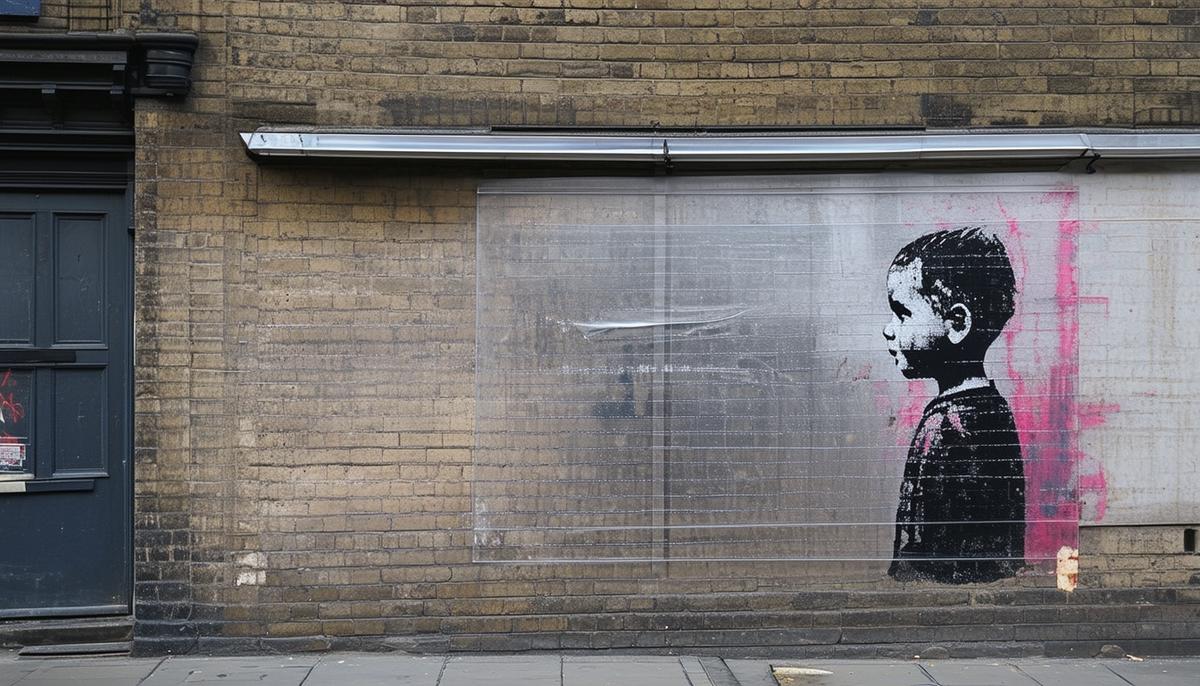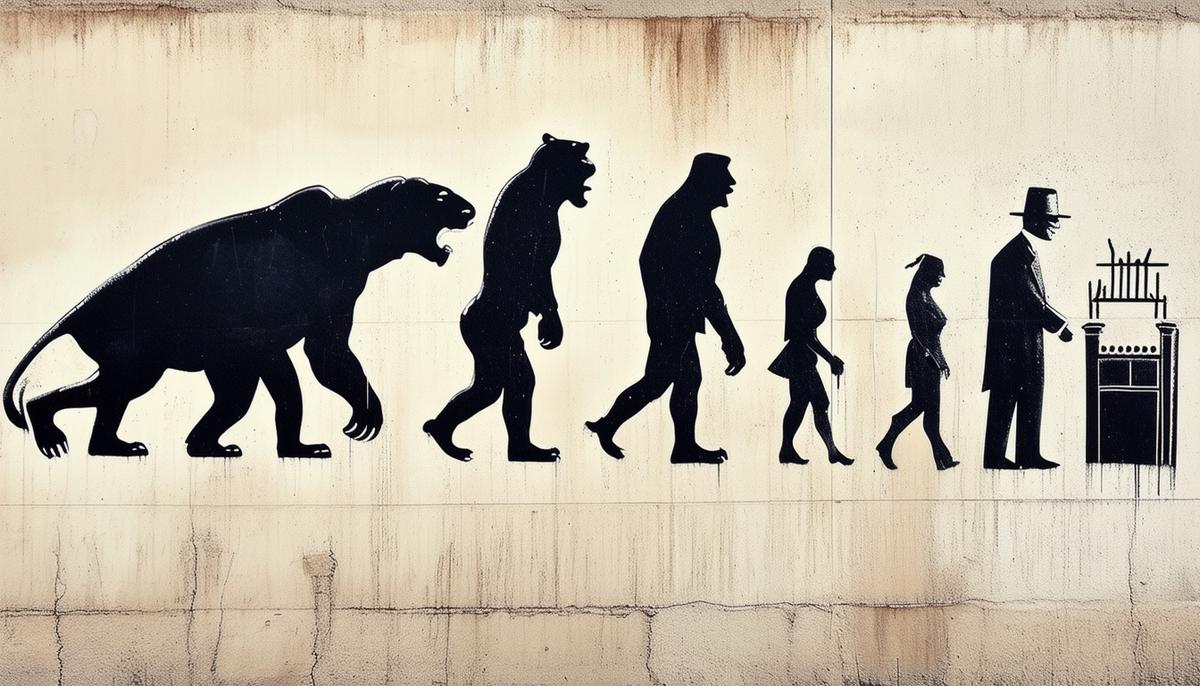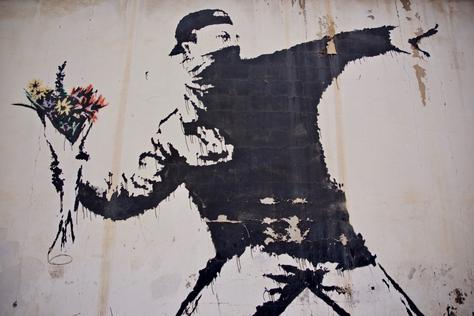Surviving Banksy Works
In the bustling streets of Shoreditch, the 'Designated Graffiti Area' mural by Banksy remains protected beneath a sturdy sheet of perspex. Here, a guard with a poodle patrols past graffiti-covered walls, blending irreverence and guarded critiques.
Marble Arch hosts another Banksy piece from the Extinction Rebellion era. The mural features a small silhouette next to a solemn slogan, relatively protected from the elements and graffiti removal crews.
However, not all works have been spared from damage and vandalism. The barcode prison escapee on Hornsey Road is fading under the effects of sun and spray paint. A rat claiming 'I Love Robbo' on Northumberland Avenue Alley, part of Banksy's historic feud with King Robbo, has been impacted by taggers and the passage of time.
Some pieces, like 'Always Fail' in Farringdon, rely on their placement to survive, slowly receding into the bricks they once declared as rat territory. These scattered works provide a reflection on the ephemeral nature of street art and the varying degrees of preservation efforts.
Seeking out Banksy's art across London becomes a journey through galleries, street corners, and urban decay. Each piece tells a story, some protected by conservation efforts, others left to the mercy of the elements and human intervention. The survival of these works is a testament to the ongoing dialogue between art, the city, and the public.

Historical Context of Banksy's Art
Banksy's artistic journey began with scheming rats scuttling onto London's underpasses, evolving into grand satirical commentaries on social structures and governmental follies. These creatures became symbols of anarchy and survival against societal oppression, speaking a visual language of resistance.
As his motifs developed, Banksy introduced figures of authority—policemen, guards, and riot gear-clad characters—to illustrate surveillance and control. These works sparked both amusement and unease, inviting viewers to grapple with multiple realities.
The street surfaces became almanacs recording chronicles of dissent and the individual's precarious place within society. Works like 'Very Little Helps' and the sprawling holiday consumers beneath Christmas lights exemplify Banksy's critique of neoliberal conquests and consumerism.
Banksy's art has grown increasingly complex, addressing global issues such as:
- Refugee crises
- Environmental concerns
- Financial feuds
Pieces like 'Cash Machine Girl' underscore the unsettling realities behind corporatized facades.
Through his provocative imagery, Banksy creates dialogues that converge across political and social landscapes. His works bend boundaries, bringing distant realities into familiar spaces and challenging viewers to confront veiled truths.
As governance and irony intertwine, Banksy's historical lanes serve as biographical banners, evoking concrete and compelling narratives that transform streets into stages for reflection and activation.

Impact of Ephemeral Nature
The ephemeral essence of street art, as seen in Banksy's work, engages the public and influences market values. These transient creations, like the 'Yellow Flower,' flourish briefly before inevitably succumbing to the elements or human intervention.
This impermanence is integral to the public's interaction with the pieces. Encountering a Banksy is like witnessing a fleeting moment of beauty, with viewers experiencing creation and decay simultaneously. The buzz surrounding these works propels them into social media discussions, amplifying their impact.
Paradoxically, the impermanence of Banksy's art also drives its market value. As the pieces fade and change, their rarity and desirability increase. The visible countdown to disappearance adds both physical and conceptual value, with collectors seeking to own a piece of the cultural capital generated by the artwork's ephemerality.
The irony lies in how Banksy's critique of commodification fuels another form of commoditization. As his works dissolve on walls and gates, they become legends, sending ripples through the art world and driving up auction prices.
This phenomenon raises questions about the core philosophy of Banksy's art and the complex relationship between the artist's intentions and the market's response. Ultimately, the temporary nature of these works sparks conversations and reflections that extend far beyond their physical presence, probing at larger discourses about art, society, and the perceived worth of the ephemeral.

Public and Critical Reception
Banksy's street art has garnered intense public and critical acclaim, igniting discussions about the socio-political expressions within each piece. Delivered anonymously, his work resonates deeply in the tension between reverence and rebellion.
The public's reception is one of enthusiastic appreciation, with communities mobilizing to safeguard these provocative murals. Protective measures, such as perspex shields, demonstrate the public's desire to preserve both the aesthetic and the intrinsic message of the artwork.
Critics delve beneath the surface, analyzing forms and themes to situate Banksy's work within broader art dialogues. They oscillate between hailing him as a renegade genius and examining the commodification tactics driven by his enigmatic persona and the scarcity of his pieces.
Controversies also arise, particularly when Banksy's work appears in historically underserved neighborhoods. These instances spark debates about:
- The role of art in social change
- The impact of corporatization on communities
The illicit nature of Banksy's installations adds another layer of complexity, blurring the lines between delinquency and delight. Legal encounters and moral gray areas emerge, provoking discussions about the reformative and punitive aspects of street art.
Banksy's ability to merge public appeal with edgy conversation strikes a chord across generations, preserving snapshots of societal undercurrents that challenge viewers' comfort zones. The community actions, critical discourse, and cultural conversations surrounding his work elevate it beyond mere visual consumption.
Through every prevented brush stroke and council camera, Banksy's art engages the public and critical communities in a dynamic mosaic of reflection and reevaluation, extending life's debates across urban stage settings.
Banksy's art transcends visual engagement, urging deeper contemplation on themes of authority, consumerism, and human rights. These pieces challenge, provoke, and resonate, leaving an indelible mark on both the physical and cultural landscapes of our times.
- Ellsworth-Jones W. Banksy: The Man Behind the Wall. St. Martin's Press; 2013.
- Hansen S. Banksy: Urban Art in a Material World. Tectum Verlag; 2016.
- McCormick C, Corcoran S. Trespass: A History Of Uncommissioned Urban Art. Taschen; 2010.






















